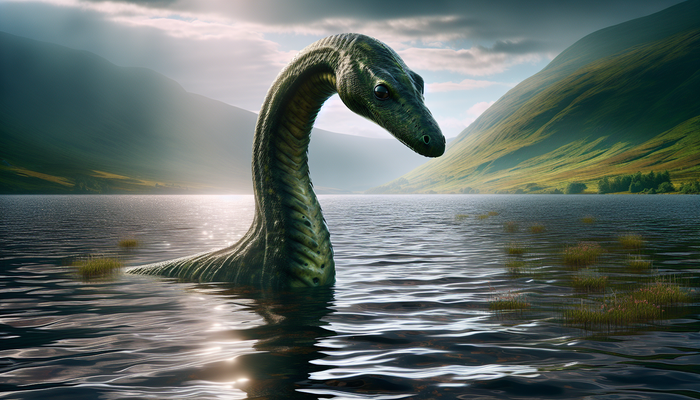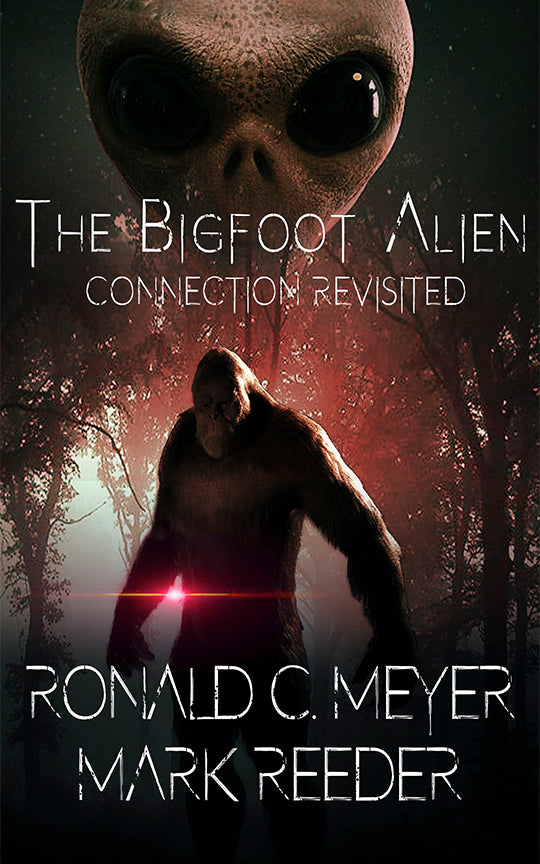The Mysterious World of Delaware Bigfoot Sightings

By Anthony Romano, Cryptozoologist
In the realm of cryptozoology, few creatures have captured the imagination and sparked debate quite like Bigfoot. This elusive, ape-like being, also known as Sasquatch, has been the subject of countless stories, investigations, and even Hollywood films. While most people associate Bigfoot sightings with the dense forests of the Pacific Northwest, the truth is that these enigmatic creatures have been reported in nearly every state across the nation. Surprisingly, even the small state of Delaware boasts a rich history of Bigfoot encounters that have contributed to the enduring mystery surrounding these legendary beings.
As a software engineer and Bigfoot enthusiast, I've always been fascinated by the intersection of technology and the unexplained. My quest to uncover the truth behind Bigfoot has led me to explore sightings and encounters from all corners of the country, and Delaware's connection to this phenomenon has proven to be both intriguing and significant. Despite its small size, Delaware has a wealth of Bigfoot lore that spans over a century, with eyewitness accounts and historical records that paint a compelling picture of a creature that may be more than just a myth.
In this article, we'll delve deep into the mysterious world of Delaware Bigfoot sightings, examining the evidence, stories, and theories that have emerged over the years. From the first recorded "Woodbooger" encounter in 1892 to the ongoing efforts of dedicated researchers and enthusiasts, we'll explore the many facets of this enduring mystery and shed light on Delaware's surprising role in the larger Bigfoot narrative. So, join me on this journey as we uncover the secrets of the First State's most elusive resident and discover why Delaware's Bigfoot sightings are more than just local legends – they're a vital piece of the larger puzzle that continues to captivate and confound us to this day.
The First Recorded Bigfoot Sighting in Delaware
The history of Bigfoot sightings in Delaware stretches back further than most people realize, with the first recorded encounter dating all the way back to the late 19th century. In 1892, a local newspaper called The Old Post published a story about a strange, Bigfoot-like creature that had been spotted roaming the forests and wilderness areas of the state. The article referred to this enigmatic being as a "Woodbooger," a name that would become synonymous with Delaware's own unique brand of Sasquatch lore.
The significance of this early account cannot be overstated, as it predates the more well-known Bigfoot sightings that began to emerge in the Pacific Northwest in the mid-20th century. The fact that Delaware had its own Bigfoot-like creature in the public consciousness as far back as the 1890s suggests that the legend of these elusive beings has been a part of the state's folklore and mythology for well over a century.
The 1892 "Woodbooger" sighting is notable not just for its historical significance, but also for the way it mirrors many of the classic Bigfoot encounters that have been reported in other parts of the country. The creature was described as a large, hairy, bipedal being that seemed to be at home in the dense forests and rugged terrain of Delaware's wilderness areas. This description would become a common thread in many of the Bigfoot sightings that would follow, both in Delaware and beyond.
While skeptics may dismiss the 1892 account as nothing more than a tall tale or a case of misidentification, it's important to remember that this sighting occurred at a time when the concept of Bigfoot was not yet a part of the popular culture. The idea of a large, ape-like creature roaming the forests of North America was not something that most people would have been familiar with, which makes the "Woodbooger" account all the more intriguing.
As we'll see throughout this article, the 1892 sighting was just the beginning of Delaware's long and fascinating history with Bigfoot. From the "Big Red Eye" of Northwest New Jersey to the ongoing efforts of dedicated researchers and enthusiasts, Delaware's connection to this enduring mystery is both surprising and significant. By examining these accounts and the evidence that supports them, we can gain a deeper understanding of not just Delaware's Bigfoot lore, but the larger phenomenon that continues to captivate and confound us to this day.
The "Big Red Eye" of Northwest New Jersey
Just across the border from Delaware, in the neighboring state of New Jersey, another Bigfoot-like creature has been making headlines for decades. Known as the "Big Red Eye," this enigmatic being has been spotted in the dense forests and rugged terrain of the Delaware Water Gap National Recreation Area and the surrounding wilderness.
The "Big Red Eye" is described as a large, hairy, bipedal creature that bears a striking resemblance to the classic image of Bigfoot. However, what sets this particular creature apart is its glowing, red eyes, which have become a defining feature in many of the sightings and encounters that have been reported over the years.
One of the earliest known sightings of the "Big Red Eye" dates back to the 1970s, when a group of hikers in the Delaware Water Gap claimed to have seen a large, ape-like creature with glowing red eyes watching them from the treeline. Since then, dozens of similar encounters have been reported in the area, with eyewitnesses describing a creature that is both massive in size and eerily silent in its movements.
Some researchers and Bigfoot enthusiasts believe that the "Big Red Eye" may be connected to the Bigfoot sightings that have been reported in Delaware over the years. The proximity of the two states, combined with the similarities in the descriptions of the creatures, has led some to speculate that the "Big Red Eye" and Delaware's "Woodbooger" may be one and the same, or at least closely related.
The idea of a Bigfoot-like creature with glowing red eyes may seem far-fetched to some, but it's important to remember that eyewitness accounts of unusual or seemingly impossible features are not uncommon in the world of cryptozoology. From the "Mothman" of West Virginia to the "Chupacabra" of Latin America, many legendary creatures are said to possess unique or otherworldly characteristics that defy conventional explanation.
Whether the "Big Red Eye" is a separate species from the classic Bigfoot, a regional variant, or something else entirely remains a mystery. However, the fact that this creature has been consistently reported in the same general area for decades suggests that there may be more to the story than mere myth or legend.
As a Bigfoot researcher and enthusiast, I find the "Big Red Eye" sightings to be particularly intriguing, as they add an extra layer of complexity and intrigue to the already fascinating world of Bigfoot lore. The idea that these creatures may be more diverse and varied than we previously thought is both exciting and daunting, as it suggests that there may be much more to discover about these elusive beings than we currently know.
By examining the "Big Red Eye" sightings and their potential connection to Delaware's Bigfoot encounters, we can gain a more comprehensive understanding of the larger phenomenon at play. Whether these creatures are separate species, regional variants, or something else entirely, one thing is clear: the mystery of Bigfoot is far from solved, and the "Big Red Eye" is just one more piece of the puzzle that continues to captivate and inspire us to keep searching for answers.
The Delaware Bigfoot Sightings Database
One of the most valuable resources for anyone interested in the world of Bigfoot is the Bigfoot Field Researchers Organization (BFRO), a group dedicated to investigating and documenting sightings and encounters from across the country. The BFRO maintains a comprehensive database of Bigfoot reports, including several notable sightings from the state of Delaware.
The BFRO was founded in 1995 by Matt Moneymaker, a Bigfoot researcher and enthusiast who has dedicated his life to uncovering the truth behind these elusive creatures. Since its inception, the organization has grown to include hundreds of members and investigators from all walks of life, each bringing their own unique skills and perspectives to the search for Bigfoot.
One of the key features of the BFRO's work is its rigorous approach to investigating and verifying Bigfoot sightings. Each report that is submitted to the organization is carefully reviewed by a team of experienced investigators, who use a variety of techniques and tools to assess the credibility and reliability of the account. This includes everything from in-person interviews with eyewitnesses to detailed analysis of physical evidence such as footprints, hair samples, and even alleged Bigfoot vocalizations.
Over the years, the BFRO has documented several notable Bigfoot sightings in Delaware, each of which adds to the growing body of evidence that suggests these creatures may be more than just a myth. One of the most compelling accounts comes from January 2004, when a witness in Georgetown, Sussex County reported seeing a large, hairy, bipedal creature standing next to a utility pole late at night.
According to the witness, the creature was estimated to be around 7-8 feet tall and had a thick, black coat of hair covering its body. The witness also noted that the creature seemed uninterested in their presence, simply looking back into the woods before the witness quickly left the area.
Another notable Delaware sighting documented by the BFRO occurred in 2011, near the town of Lewes, also in Sussex County. In this case, a witness reported seeing a large, hairy creature crossing the road in front of their vehicle, then standing upright and staring at the car before disappearing back into the woods.
These sightings, along with several others that have been reported over the years, suggest that Delaware may indeed be home to a population of Bigfoot-like creatures. While skeptics may dismiss these accounts as misidentifications or hoaxes, the fact that they have been carefully investigated and verified by the BFRO lends credence to the idea that there may be more to the story than meets the eye.
As a researcher and enthusiast, I find the Delaware sightings documented by the BFRO to be particularly compelling, as they provide a level of detail and credibility that is often lacking in other Bigfoot reports. The fact that these sightings have occurred in different parts of the state, at different times, and by different witnesses, suggests that there may be a larger pattern at play, one that warrants further investigation and study.
Of course, the presence of Bigfoot in Delaware is far from a settled question, and there is still much work to be done in terms of gathering evidence and building a more complete picture of these elusive creatures. However, the sightings documented by the BFRO provide a solid foundation for future research and investigation, and serve as a reminder that the mystery of Bigfoot is far from solved.
As we continue to explore the many facets of Delaware's Bigfoot lore, the work of organizations like the BFRO will undoubtedly play a crucial role in helping us to unravel the secrets of these enigmatic beings. By carefully documenting and investigating each sighting and encounter, we can slowly but surely build a more complete understanding of the Bigfoot phenomenon, and perhaps even uncover the truth behind one of the greatest mysteries of our time.
The Delmarva Peninsula and Bigfoot Migration
One of the most intriguing aspects of Delaware's Bigfoot lore is the potential role that the Delmarva Peninsula may play in the larger mystery of these elusive creatures. The Delmarva Peninsula, which includes parts of Delaware, Maryland, and Virginia, is a unique and diverse ecosystem that is home to a wide variety of plant and animal life, including several species that are found nowhere else on Earth.
Some researchers and Bigfoot enthusiasts believe that the Delmarva Peninsula may serve as a natural corridor for Bigfoot migration along the East Coast, providing these creatures with a relatively undisturbed and resource-rich environment in which to move and thrive. The idea is that Bigfoot populations may use the dense forests, wetlands, and waterways of the peninsula as a sort of highway, allowing them to travel between different regions without being detected by human observers.
The theory of Bigfoot migration along the Delmarva Peninsula is supported by several lines of evidence, including the distribution of sightings and encounters across the region. While Delaware itself may not have the highest number of Bigfoot reports compared to other states, the fact that sightings have occurred in different parts of the peninsula suggests that these creatures may be moving through the area on a regular basis.
In addition to the distribution of sightings, the unique geography and ecology of the Delmarva Peninsula also lend credence to the idea of Bigfoot migration. The peninsula is situated between the Chesapeake Bay and the Atlantic Ocean, creating a narrow strip of land that is relatively isolated from the surrounding mainland. This isolation, combined with the diverse array of habitats and resources found on the peninsula, may make it an ideal environment for Bigfoot to move and thrive without being detected by human populations.
Another factor that may support the idea of Bigfoot migration along the Delmarva Peninsula is the presence of the Appalachian Mountains, which run along the western edge of the region. Some researchers believe that Bigfoot populations may use the Appalachian range as a sort of natural highway, allowing them to move between different parts of the East Coast without being seen.
The idea is that Bigfoot may follow the ridges and valleys of the Appalachians, using the dense forests and rugged terrain as cover to avoid detection by humans. When they reach the Delmarva Peninsula, they may then use the unique geography and ecology of the region to move and forage for food, before continuing on their journey up or down the coast.
Of course, the theory of Bigfoot migration along the Delmarva Peninsula is still largely speculative, and there is much work to be done in terms of gathering evidence and building a more complete picture of these creatures' movements and behaviors. However, the idea is an intriguing one, and it highlights the potential importance of the Delmarva region in the larger mystery of Bigfoot.
As a researcher and enthusiast, I find the idea of Bigfoot migration along the Delmarva Peninsula to be particularly compelling, as it suggests that these creatures may be more mobile and adaptable than we previously thought. The fact that they may be using the unique geography and ecology of the region to their advantage is a testament to their intelligence and resourcefulness, and it highlights the need for further study and investigation into their behavior and movements.
Of course, the presence of Bigfoot on the Delmarva Peninsula is far from a settled question, and there is still much work to be done in terms of gathering evidence and building a more complete picture of these elusive creatures. However, the idea of Bigfoot migration along the East Coast is an intriguing one, and it serves as a reminder that the mystery of Bigfoot is far from solved.
As we continue to explore the many facets of Delaware's Bigfoot lore, the potential role of the Delmarva Peninsula in the larger mystery of these creatures will undoubtedly be a key area of focus for researchers and enthusiasts alike. By studying the unique geography, ecology, and distribution of sightings across the region, we may be able to gain new insights into the behavior and movements of these enigmatic beings, and perhaps even uncover the truth behind one of the greatest mysteries of our time.
From Bigfoot to UFOs: Hangar 1 Publishing Has You Covered!
Explore Untold Stories: Venture into the world of UFOs, cryptids, Bigfoot, and beyond. Every story is a journey into the extraordinary.
Immersive Book Technology: Experience real videos, sights, and sounds within our books. Its not just reading; its an adventure.



























